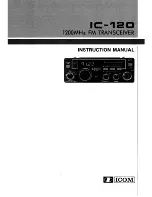
Drawing Number: 21210
Revision: NR
AN IMPROVED TECHNIQUE FOR
UTILIZATION OF CONFORMAL BALLISTICS
SENSOR CALIBRATION DATA
4
The straight line is the best line that can be constructed
through the linear portion of the curve as shown in
Figure 4 and the pressure intercept (or offset) is the
point at which this line crosses the pressure axis, in psi.
Instead of establishing the sensitivity parameter (which
has been shown to have little meaning for this sensor)
the user now determines the slope as defined in Eq. 6
and the accompanying pressure offset by constructing
the best straight line as described previously.
Pressures P1 and P2 are arbitrarily established at some
point well above and well below the expected nominal
pressure of the test.
The corresponding outputs at these pressures should be
an average of at least 20 cartridges taken from the same
lot of ammunition as is under test.
The main difference between utilization of the data with
this method is that now a constant (pressure offset) must
be added to each reading. However, this can be easily
handled by most data reduction methods in use today.
Example:
In actual practice, this is how a conformal sensor/charge
amplifier system could be utilized:
Assume that averaging the data from 20 consecutive
calibration runs performed on a conformal sensor
yielded a slope of .04 pC/psi and an intercept of 7,500
psi, determined by constructing the best fitting straight
line as described previously.
Assume also that average expected peak pressure is
25,000 psi.
Approximate full scale charge output is:
pC
1000
pC/psi
.04
psi
25,000
Set range of charge amplifier output to 1000 pC/volt (or
other desired range).
Read peak output voltage of .800 volts during test.
Peak indicated charge is then:
1000 pC/volt x .80 volts = 800 pC
Indicated peak pressure is:
offset
slope
charge
peak
(pk)
Pressure
psi
7,500
pC/psi
.04
pC
800
P
P = 20,000 psi + 7500 = 27,500 Psi
As previously stated, this method will yield accurate
results anywhere within the linear portion of the sensor
calibration curve without inherent errors due to
variability of sensitivity with pressure level.
Accuracy should be close to that expected for standard
piezoelectric
sensors
within
the
limitation
of
transmissibility variations in the cartridge cases.
Simplified standardization techniques for Conformal
Sensor
The technique described by the previous example
outlines one basic method of output signal utilization.
This method in actual practice may be cumbersome for
repeated testing because of the conversions that must be
made from measured charge output to indicated peak
pressure.
Other system scaling methods exist which further
simplify signal utilization.





































